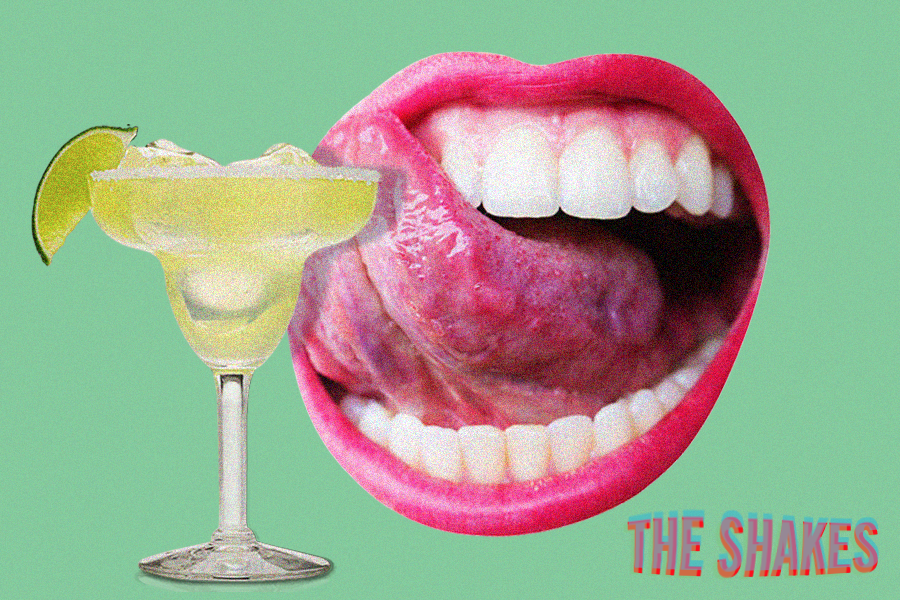Every clique, subculture or industry has its own unique jargon, a vocabulary that, to an outsider, might as well be an entirely different language. For some, the words are simply things that most people have never heard of, like medical terms, and that for non-practitioners are totally irrelevant. In other instances, like law enforcement, acronyms, abbreviations and code words communicate necessary information in a succinct and rapid fashion to those who need to know.
For those of us working in restaurants and bars, it’s all of the above. Ours just often sound a little kinkier.
Dirty dumping, for example, isn’t the godawful sexual practice it brings to mind. It simply means dumping the entire contents of a cocktail shaker, ice and all, into a glass and serving it as is. This is common practice in high-volume clubs and casinos, and it’s something I intentionally do with drinks like margaritas and Mai Tais because those cocktails go down so fast it’s really okay that they weren’t poured over fresh ice: They’re not going to have a whole lot of time to melt.
Here are 20 more seemingly NSFW words or phrases that, if you listen closely, you’ll hear swirling behind or floating over a bar fairly regularly.
But don’t worry: They’re not as dirty as you think.

Dry Shake: To shake the ingredients of a cocktail without ice. This is always done, at least once, with drinks with eggs in them, since it allows the egg and other ingredients to fully blend, creating the egg drink’s signature creamy smoothness.
This pisco sour is flat. Did you dry shake first?
Oh fuck, I knew I forgot something.
Double Strain: To use a hawthorne strainer and a tea strainer to strain a shaken drink before it goes into the glass. This eliminates even the smallest slivers of ice, creating a glassy finish on shaken drinks served up or down.
If it’s on the rocks and you’re in a hurry, don’t worry about double straining. Anything up or down, though, has to be double strained.
Jigger: A bartender’s measuring cup. The most commonly used jiggers in cocktail bars are Japanese style. They measure 1.5 ounces and 2 ounces on one side, and 1 ounce, three-quarters ounce and one-half ounce on the other.
Shit! Where’s my jigger?!?!
First Cut: Restaurant work is largely about staffing the minimum number of people you can successfully get through a shift with. So if you need three bartenders for the peak rush of a Friday night, you’ll most often have two scheduled to open and one coming in later in the evening. Of the two opening shifts, one will be designated ‘first cut,’ meaning that, when it slows down and the evening can be managed with two people behind the bar, they get to go home.
Hey, what are you doing later?
Not sure, but I’m first cut so I’ll call you when I’m out.
Split-Base: Cocktails are like melodies — there are only so many combinations you can make without repeating someone else’s work. A fun, simple way to go outside the box is to take the base spirit of a classic, like gin in a Negroni, and split the proportions with another spirit. One of my favorites is a split-base Negroni with mezcal. This changes the recipe from 1 ounce gin; 1 ounce Campari; 1 ounce sweet vermouth; to one-half ounce gin; one-half ounce mezcal; 1 ounce Campari; and 1 ounce sweet vermouth. You have my word that it’s outstanding.
That’s different! What’d you change?
Oh! It’s a split-base — gin and mezcal.
DTO: This one’s easy — Daiquiri Time Out. Made popular by the amazing Death & Co cocktail bar (and book), DTOs — baby daiquiris, doled out to the bar team around midnight — are a quick way to get through the final push of an evening.
So, uh… DTO?
Fuck yes, I’ll make ‘em.
Double Rocks: The type of glassware used for drinks most often served on the rocks, like margaritas and whiskey sours.
What does that drink go in again?
The Sun God? Double rocks.
Clopening: Restaurants and bars that are open for lunch/brunch and stay open late (like, past midnight) are a huge pain in the ass to staff. At some point, someone is going to have to clopen: Close the night shift and then be back in the morning to open. Trust me, this is awful. By the time you get home and drink yourself to sleep, you’re looking at between three and five hours before you have to be back to work.
Are you working tomorrow?
Oh yeah, I’m clopening. It’s gonna be great.
Swizzle Stick: A pronged stick of wood, like a tree with its roots exposed, used for hand-blending tiki drinks. Instead of shaking a drink and then pouring it over crushed ice, you can, if you so desire, build the drink in the glass, add ice and use said swizzle stick to blend the ingredients.
What the fuck is that?
Oh, this? It’s a swizzle stick.
Reach-in: The refrigerators where bottled and canned beer are stored, usually glass-fronted and facing the bar seats.
Where’s the Notch, again?
Reach-in, on the left.
Shifty: The free drink everyone over 21 gets at the end of their shift. These are integral to morale.
Anyone else want to add something to the shifty tab before we close it?
Yes!!! A glass of rose!
Rail: Know when you’re sitting at a bar, and there’s a fairly clearly marked line between where the bar top ends and the place for a bartender’s tools — tins, glasses, strainers, etc. — begins? It’s usually indented a bit, perhaps covered in a black mat marked with a liquor brand’s insignia, or else it’s corrugated metal set against the bar’s wood/marble/tile/vinyl/whatever?
That space is the rail. It’s where drinks are built, tools are set and all manner of extra syrups, alcohol and water (and maybe tears) run off over the course of an evening. These spaces must be cleaned at the end of the night.
Hey, did you wipe down the rails?
Yeah, but let me do ’em one more time; shit was flying everywhere tonight.
Rim: The edge of a glass, but more specifically, when a drink calls for something to be put onto the rim of a glass, like salt for a margarita or sugar for a Sidecar or Lemon Drop.
Hey, can I get a Lemon Drop?
Yeah, absolutely. Sugar rim with that?
Cherry Sinker: The cherry sitting at the bottom of drinks like Aviatons and Manhattans. I know, totally disappointing, right?
Do you garnish your Last Words?
Yup, cherry sinker.
In and Out: Many cocktails benefit from a light spritzing of citrus oil — mostly lemon or orange. For martinis ordered with a twist, for example, I squeeze a piece of lemon rind over the drink (to express the oils). Next, I swipe the rim of the glass with said piece of rind (to make sure the oils get to your nose). Finally, I plunk the rind in the drink before serving.
An in-and-out garnish is the same idea — express the oils, rim the glass — except that the rind isn’t placed in the drink. You make sure to get the oils in the drink (spritz it over the surface) and out (rim the edge of the glass), but don’t leave the fruit in the glass.
I always in and out my Oaxaca Old Fashioneds; otherwise, you end up with too much smoke in the drink.
Speed Rail: When you order a gin and tonic (or vodka soda, or whiskey ginger) without specifying what kind of liquor you’d like, bartenders use what’s called the well spirit — i.e., whatever is most affordable and lives on shelves next to their drink-building station (the well). The actual well is the big pit where ice is scooped from; the well liquors themselves live on a series of shelves right in front of (or to the left or right of) the well. This is the speed rail.
You made those drinks really fast! You hardly moved!
Yeah, well, that’s why we call it the speed rail.
Cougar Juice: This is whatever white wine sells by the trough. It’s probably a Sauvignon Blanc from New Zealand.
Need anything from storage?
Yeah, almost out of Cougar Juice, grab at least four bottles.
Late Pop: A pop is when a lot of people wander into a place at roughly the same time. A late pop is when this occurs after the usual rush has died down.
Hey, how was last night?
Oh, solid. Steady dinner service, good crowd til about 11 and then a late pop just before close.
Fat Wash: If you’re a booze nerd or really into hitting all the trendy bars, odds are you’ve come across a bone-marrow rye, a duck-fat washed Sazerac or something equally decadent and pretentious (but delicious). Fat-washing alcohol is essentially infusing booze with a fatty substance (like bacon, butter and various forms of duck). This works the same as other infusions, with one added twist: Once you’ve infused say, vodka, with fresh bacon, you need to put that shit in the refrigerator. Why? Because the fat will congeal to the surface, allowing you to strain away (aka fat wash) the unctuous particles but retain that bacon-y, buttery or duck-y goodness in the spirit.
What’s the cocktail du jour?
A duck confit Manhattan (because we can).
Slosh Bucket: Many bars are equipped with custom-fit metal strainer-type pans for their sinks, which catch things like mint, lemon wedges and whatever else ends up in a cocktail tin but doesn’t melt and will therefore fuck up your drains and back-up the sink. But not all of them. For those bars without the luxury of sink catches, an industrial bucket and a giant colander placed just in front of the sink provides the same pipe-saving properties. You can slosh all of that leftover mojito garbage straight into the colander, which will strain the solids from the liquids, and then empty the bucket later. Hence, the slosh bucket.
How’s that slosh bucket lookin’?
Getting full, you mind running it to the back?

